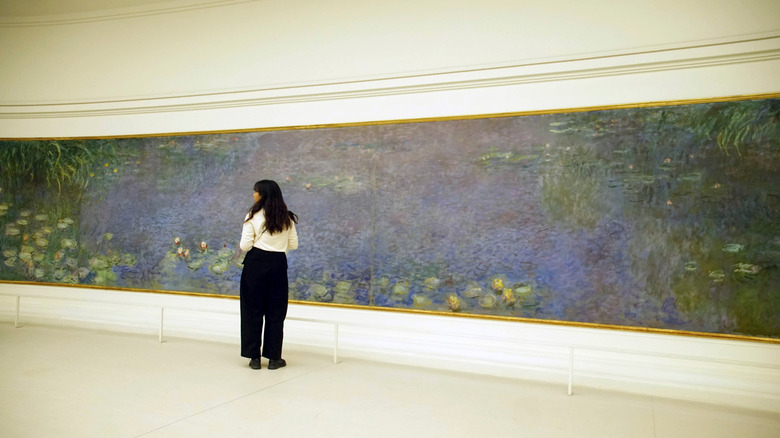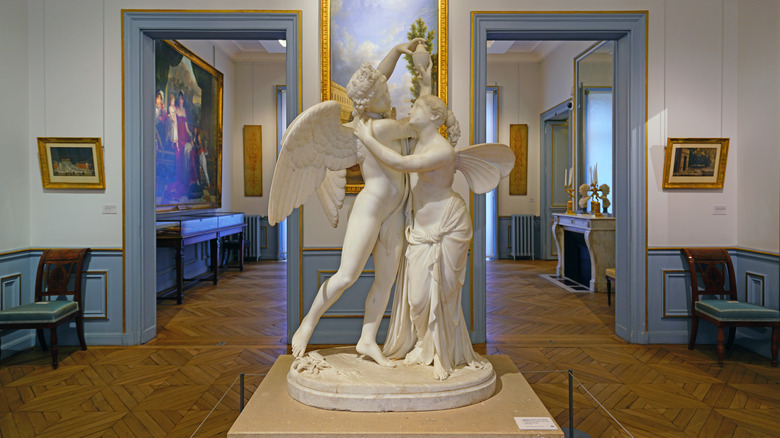Rick Steves Says Savvy Tourists Skip The Musee D'Orsay And Get Their Monet Fix At These Smaller Museums
Born in Paris, Claude Monet became a key figure and catalyst of the world-famous art movement Impressionism. But his fame arrived unexpectedly. In 1874, art critic Louis Leroy ridiculed Monet's "Impression, soleil levant" painting. But little did he know that, by derisively using the epithet "Impressionist" in his review, the critic would give name to a recognized art movement that still today draws sightseers from across the globe to marvel at Monet's collection and the legacy of his fellow painters.
If you're seeking great Impressionist works, internet searches and word-of-mouth will lead you to discover the celebrated Musee D'Orsay in Paris — as it should — but with fame come the crowds. "Europe's great museums can be hard work, and I am rarely good for more than two or three hours at a time, " famed travel writer Rick Steves says on his website, Rick Steves' Europe. If you want to experience a relaxed visit at an art gallery and take your time, Steves suggests avoiding that well-known Paris tourist trap and swapping the Orsay for smaller museums, such as the Orangerie and the Marmottan, both also located in the City of Light.
The first museum Steves mentions is Musée de l'Orangerie. Nestled in Jardin des Tuileries, this museum offers an immersive experience of Monet's "Water Lilies." A collection of eight large panels, each measuring 6.5 feet tall, depicting the artist's beloved soft pink, yellow, and white nymphéas against the reflective blue background of the pond, which he lovingly planted in his garden at Giverny in Normandy, France. Monet donated the paintings to the French government after World War I and helped design their permanent installation at the Orangerie. If you're feeling particularly inspired, you can even go to Giverny and tour the artist's home.
Visit Musée Marmottan Monet for a captivating Impressionist experience
The Marmottan is another beautiful art museum that's well worth a visit, whether you're looking for Impressionist art or not. "Perched on the edge of Paris and fronted by a lovely park, the Marmottan owns one of the best collections anywhere of works by Monet, including the painting that gave Impressionism its name," Rick Steve says in on his website, Rick Steves' Europe. And we couldn't agree more. Hosting over 100 of Claude Monet's paintings spanning his young age and adulthood, the Marmottan Monet Museum is a landmark in the capital and the only museum that displays the last versions of the famed "The Japanese Bridge" and "The House Seen from the Rose Garden." In 1966, the museum acquired the remainder of Monet's works that still belonged to the family and his home in Giverny, becoming the universal beneficiary of the French artist.
Stumble upon some of his most recognized paintings, featuring "Reflections on the Thames," which skillfully captures the fog and dim light in London, and "The Train in the Snow", a watercolor painting depicting a steam train emerging through a snowy winter landscape. Monet is not the only star of the institution; other famous painters are also exhibited here, welcoming you to delve into this 19th century-artistic movement. Art enthusiasts can find Berthe Morisot's most important works, joined by the likes of Eugène Delacroix, Édouard Manet, Edgar Degas, and more modern artists like Paul Gauguin and Marc Chagall.
Admission at time of writing for the Musée de l'Orangerie is €12.50, or about $14.50. For the Marmottan, admission is closer to $16. Both museums offer discounted or free tickets for teenagers, children, students, journalists, people with disabilities, and more. Check the website before you visit to see if you qualify for a discount, and be sure to book tickets in advance. To see Monet without leaving the U.S., art lovers should visit the Rhode Island School of Design.

